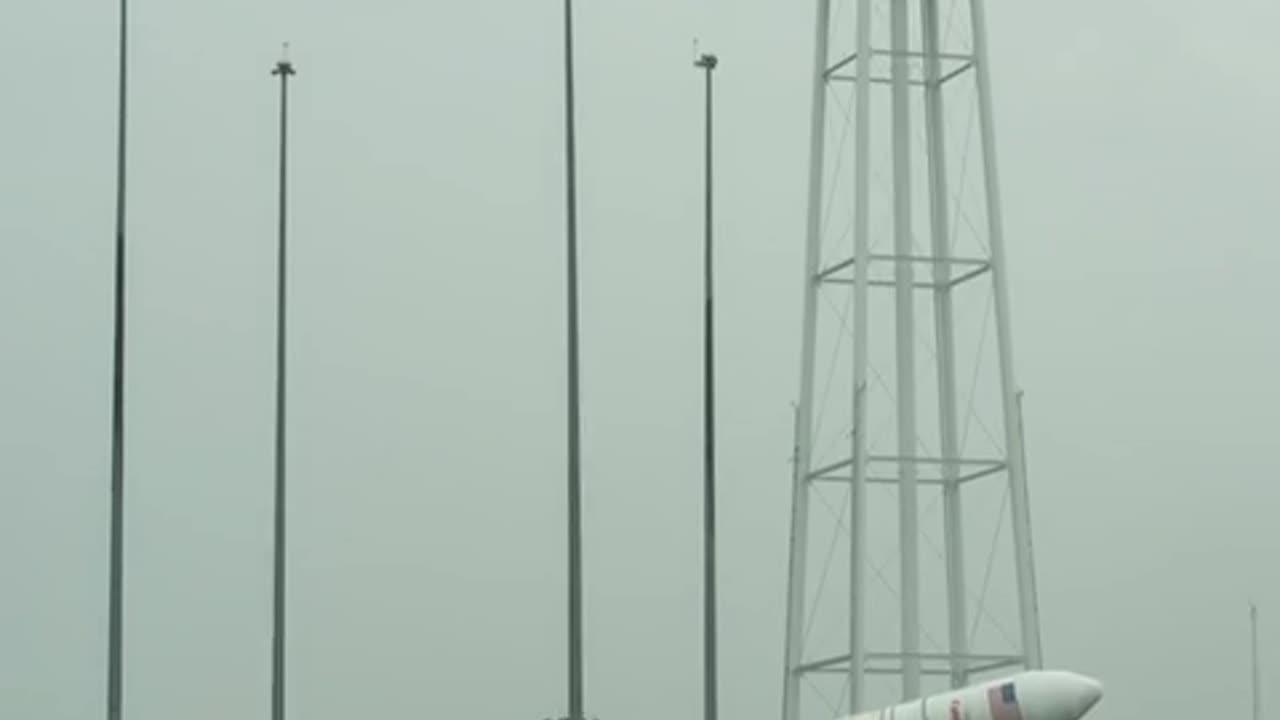Premium Only Content

Antares Rocket Raised on Launch Pad NASA
As of my last knowledge update in September 2021, NASA and other space agencies have been actively researching and developing methods for extracting water on the Moon. Water is a critical resource for future lunar exploration missions, as it can be used for drinking, growing plants, generating oxygen, and producing rocket fuel through electrolysis.
One of the primary sources of water on the Moon is believed to be in the form of ice located in permanently shadowed regions near the lunar poles. These areas are shielded from direct sunlight and can maintain extremely cold temperatures, allowing water ice to accumulate over time. Extracting water from these areas would likely involve using a combination of robotic and human-operated systems. Here are some potential methods that have been considered:
1. **Drilling and Excavation:** Robots or landers could be equipped with drilling equipment to penetrate the lunar surface and reach the ice deposits. Once the ice is reached, it could be excavated and collected for processing.
2. **Melting:** Some concepts involve using solar energy or other heat sources to melt the ice in situ. The resulting water could then be collected and stored for various uses.
3. **Heating and Condensation:** Another approach is to use heat to vaporize the ice, and then capture and condense the water vapor to create liquid water.
4. **Scooping and Processing:** Robotic arms or scooping devices could be used to collect lunar regolith (surface material) containing water ice. The collected material could then be processed to separate the ice from the regolith.
5. **ISRU (In-Situ Resource Utilization):** ISRU involves using local resources to support human activities in space. For lunar water extraction, this could involve developing processing plants that take in lunar regolith and use various techniques to extract and purify water.
6. **Mobile Mining and Resource Transport:** Mobile platforms could be used to travel to different locations in search of ice, carrying the necessary equipment for extraction and processing.
7. **Automation and Remote Operation:** Given the harsh lunar environment, much of the water extraction process may be automated or remotely operated from Earth to minimize the risk to astronauts and equipment.
It's important to note that the methods for extracting water on the Moon are still under active research and development, and the specific techniques used may evolve as new technologies are developed and tested. NASA's Artemis program, which aims to return humans to the Moon by the mid-2020s and establish a sustainable lunar presence, will likely play a significant role in advancing these technologies.
For the most current and detailed information on NASA's plans and progress in lunar water extraction, I recommend visiting NASA's official website or checking out recent scientific publications related to lunar exploration.
-
 2:20:30
2:20:30
Inverted World Live
7 hours agoPsyops in Minnesota | Ep.59
70.7K6 -
 1:40:46
1:40:46
Badlands Media
14 hours agoBaseless Conspiracies Ep. 137: Predictive Programming, Pence’s Role & the Parallel War
72.6K26 -
 2:45:00
2:45:00
TimcastIRL
8 hours agoIRAN WAR: Trump THREATENS Iran To EVACUATE NOW, Mobilizes Military | Timcast IRL
225K134 -
 9:32
9:32
MattMorseTV
15 hours ago $5.42 earnedTrump just DOUBLED DOWN.
43.3K31 -
 1:25:17
1:25:17
FreshandFit
9 hours agoThe Truth About Investing In Crypto
82.4K5 -
 3:08:32
3:08:32
Barry Cunningham
9 hours agoPRESIDENT TRUMP MAKES A DEAL AT G7 | IRAN MIGHT BE TOAST | WEIRDNESS IN MINNESOTA CASE!
91.4K98 -
 2:47:07
2:47:07
Tundra Tactical
7 hours ago $6.12 earned🎯🔫 Defending Our Rights: Unpacking the Short ACT & Hearing Protection Act in HR 1 Draft! Live Now!
50.7K5 -
 7:12:46
7:12:46
SpartakusLIVE
10 hours ago#1 Chicken Legs (FALSLY ACCUSED) Streamer bring YOU Monday MOTIVATION
87.5K2 -
 4:18:27
4:18:27
VapinGamers
7 hours ago $3.75 earnedMarvel Rivals - Rumblers Unite to Save the Galaxy and Demand a Tourney - !rumbot Beta Version
56.3K1 -
 26:57
26:57
Scary Mysteries
18 hours ago5 Most BIZARRE Clues Behind Real-Life Horror Stories
45.6K1